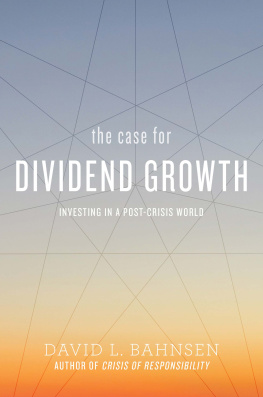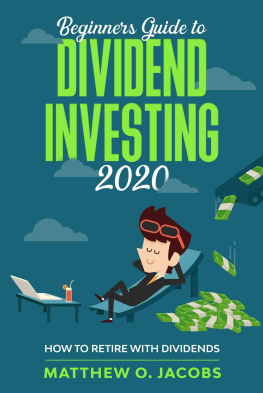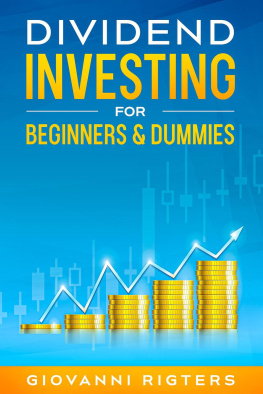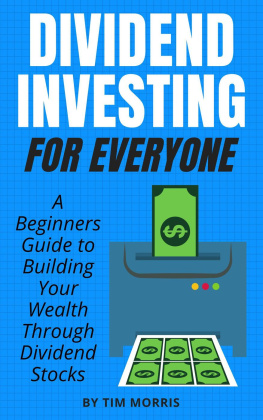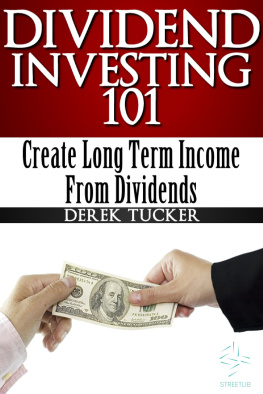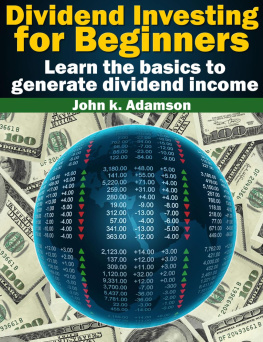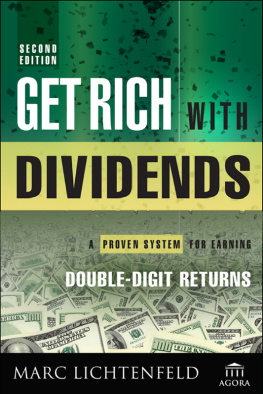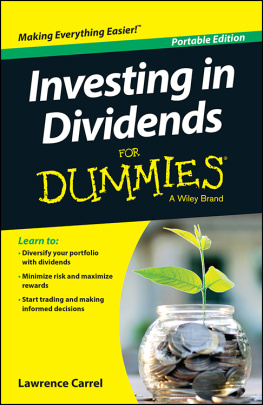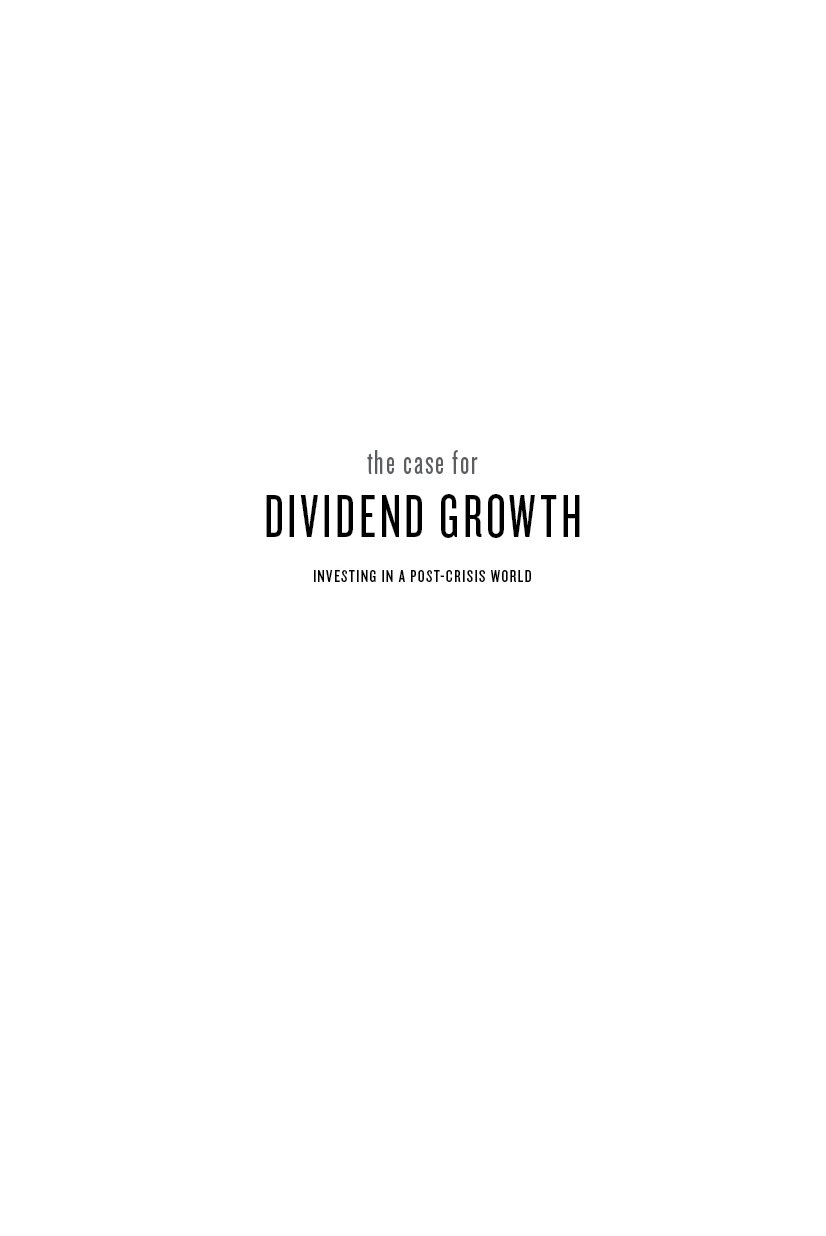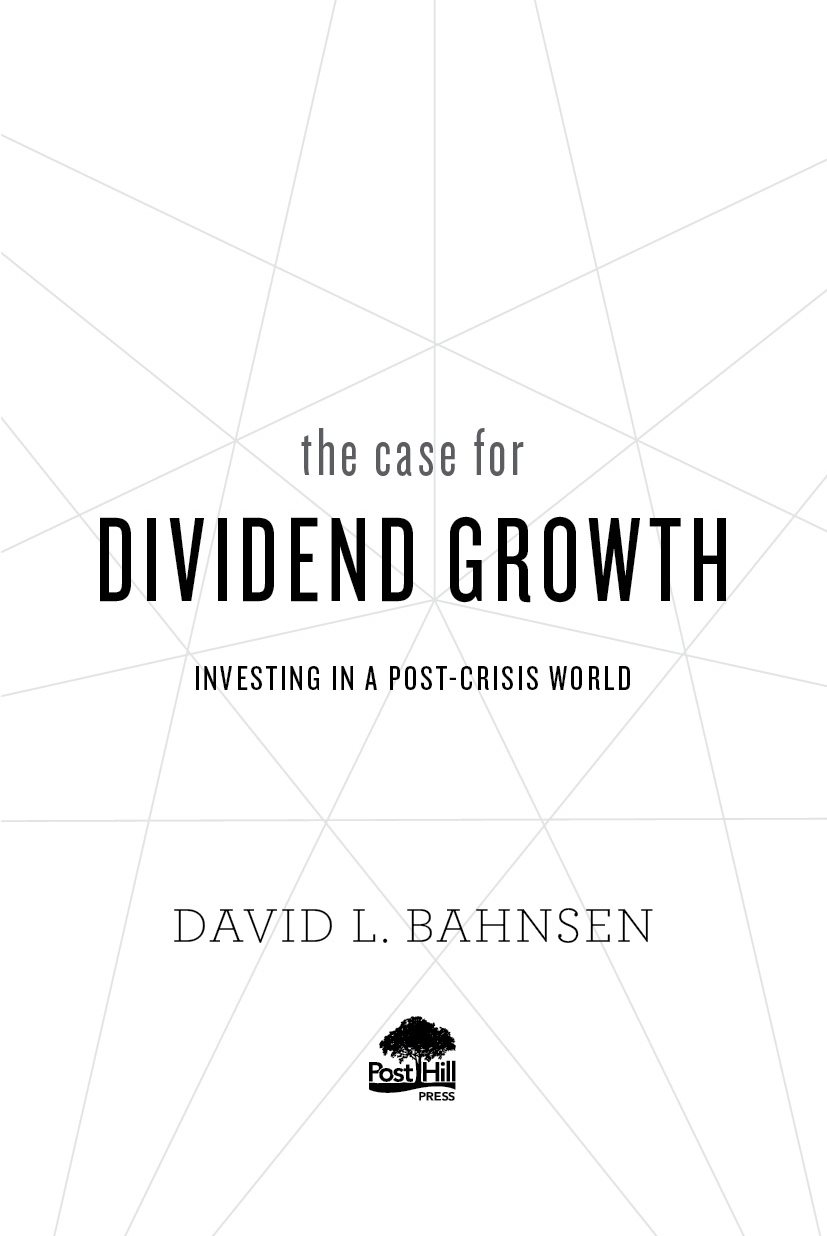Advance Praise for
The Case for Dividend Growth
In three-decade baby boom retirements, the only rational investment objective isnt income; its growth of income. Your income has to keep rising on at least the same trajectory as your living costs, or youll run out of money. No problem: the dividends of mainstream equities have, in the aggregate, been increasing at almost twice CPI inflation for as long as any of us have been alive. And wait, theres more: to the extent you can live on those rising dividends, your patrimony can continue to grow for your heirs. Yet it isnt too much to say that the immense power of dividend growth has always been the least understood, most underappreciated phenomenon in investing. Well, not anymore: investors of all ages will find David Bahnsens pellucid and highly readable tutorial a life-forwarding experience.
Nick Murray , author of Simple Wealth, Inevitable Wealth
Davids understanding of capital markets comes through in this book loud and clear. From alternatives to fixed income, to the asset class that is the subject of this book, dividend stocks, he writes in a way that allows investors of all shapes and sizes to understand. Youll be a better investor for reading.
Anthony Scaramucci , Founder and CEO, SkyBridge Capital
In a financial world of pundits and experts energized by prediction compulsion, David Bahnsen stands out as an advisor who understands and embraces the eternal truth that long term accumulation and reinvestment of dividend income is the major key to sustainable investment success.
Lowell Miller , Chief Investment Officer and Co-founder,
Miller/Howard Investments
Throughout his successful career, David has implemented a consistent dividend growth equity investment philosophy. In this book, David provides the reader valuable new insight toward that process in a coherent, unique and thoughtful manner. Readers will become more complete investors after understanding Davids dividend growth philosophy.
Joseph M. Terranova , Senior Managing Director,
Virtus Investment Partners; CNBC Ensemble Member since 2008
Also by David L. Bahnsen
Crisis of Responsibility:
Our Cultural Addiction to Blame and How You Can Cure It
A POST HILL PRESS BOOK
The Case for Dividend Growth:
Investing in a Post-Crisis World
2019 by David L. Bahnsen
All Rights Reserved
ISBN: 978-1-64293-045-0
ISBN (eBook): 978-1-64293-046-7
Cover art by Faith McCormick
Interior Design and Composition by Greg Johnson/Textbook Perfect
Published in association with the literary agency of Legacy, LLC,
501 N. Orlando Avenue, Suite #313-348, Winter Park, FL 32789.
David and his team of investment professionals, the Bahnsen Group LLC, are registered with HighTower Advisors, LLC. The opinions expressed in this book are Davids and do not represent those of HighTower or its affiliates. This is not an offer to buy or sell securities, and HighTower shall not in any way be liable for claims related to this writing, and makes no expressed or implied representations or warranties as to its accuracy or completeness.
No part of this book may be reproduced, stored in a retrieval system, or transmitted by any means without the written permission of the author and publisher.

Post Hill Press
New York Nashville
posthillpress.com
Published in the United States of America
For Darin Dennee, whose friendship from 19962001
provided some of the greatest memories, laughs,
and catalysts for growth any human could ever hope for,
and who shares my belief in a life of aspiration.
It is from those aspirations that this book is born.
May your life always receive the dividends
you so richly deserve.
Contents
The first ten years of this new millennium provided an exciting opportunity for investor educationit provided a lost decade in U.S. equities. Book-ended by two massive bear markets, just as the demographic reality of baby boomer retirements began, investors were given a chance to remember what investing is supposed to be about, and what can lead to disaster. Through the turbulent first decade of this new millennium, and the post-financial crisis reality since, the assumptions that drive investor behavior and decisions have been challenged, and hopefully informed. And from the decades that pre-dated this new millennium, and everything we have seen since, one thing stands out. Dividend growth investing represents a mathematical miracle that creates an offense and a defense for savvy investors that stands the test of time.
The investment industry has convinced us that there are growth investors, and there are income investors; there are conservative investors, and aggressive ones. But the fact of the matter is, with all the different nuances in risk appetite, timeline, personality, sophistication, and anything else, all objectives and descriptions end up coming down to one thinga receipt of cash. The rest is just details.
There was a time when dividends were half, or more, of the annual return stocks offered. But as dividend yields have dropped across broad equity indices, are we to believe that price appreciation will be substantially higher than its historical average, to equal past total returns? In reality, companies that have stood the test of time become dividend payers. Technology is proving this true of entire sectors. The past and future are about companies rewarding their shareholders with profits paid out as cash. And in studying the history of this, we learn a lot we need to know about the future.
Yes, the dividend is cash we put in our pocket. Yes, the dividend is a continued and realized form of reward (compensation) in exchange for the investment made into the company. But what too many miss is not what the dividend does for us as investors, but what the dividend tells us about the company we own. Shareholder alignment with management matters. And so does the tell of a cash payment in a world of crazy accounting.
Before we talk about the advantage of dividends for those withdrawing from their wealth, we need to look at the equally potent force of people using dividends to accumulate wealth. That accumulation story causes us to look deep into the miracle of compounding. In fact, we will see that the reinvestment of dividends in a fully diversified dividend growth stock portfolio, is actually a story of compounding within compounding within compoundinga leveraging of math and time that ought to be irresistible.
Investment advisors have been building financial plans around systematic withdrawals from diversified portfolios forever. But what if the assets one is withdrawing from are in an [inevitable] period of decline? How does one withdrawing from their nest egg insulate themselves from the realities of a bear market? One fact changed my thinking foreverstock price appreciation goes positive, and negative; dividend payments can only be positive. Fluctuation in value is part of being an investor, but tapping the source of only positive returns in negative markets goes a long way to preserving your income flow for the long haul.

